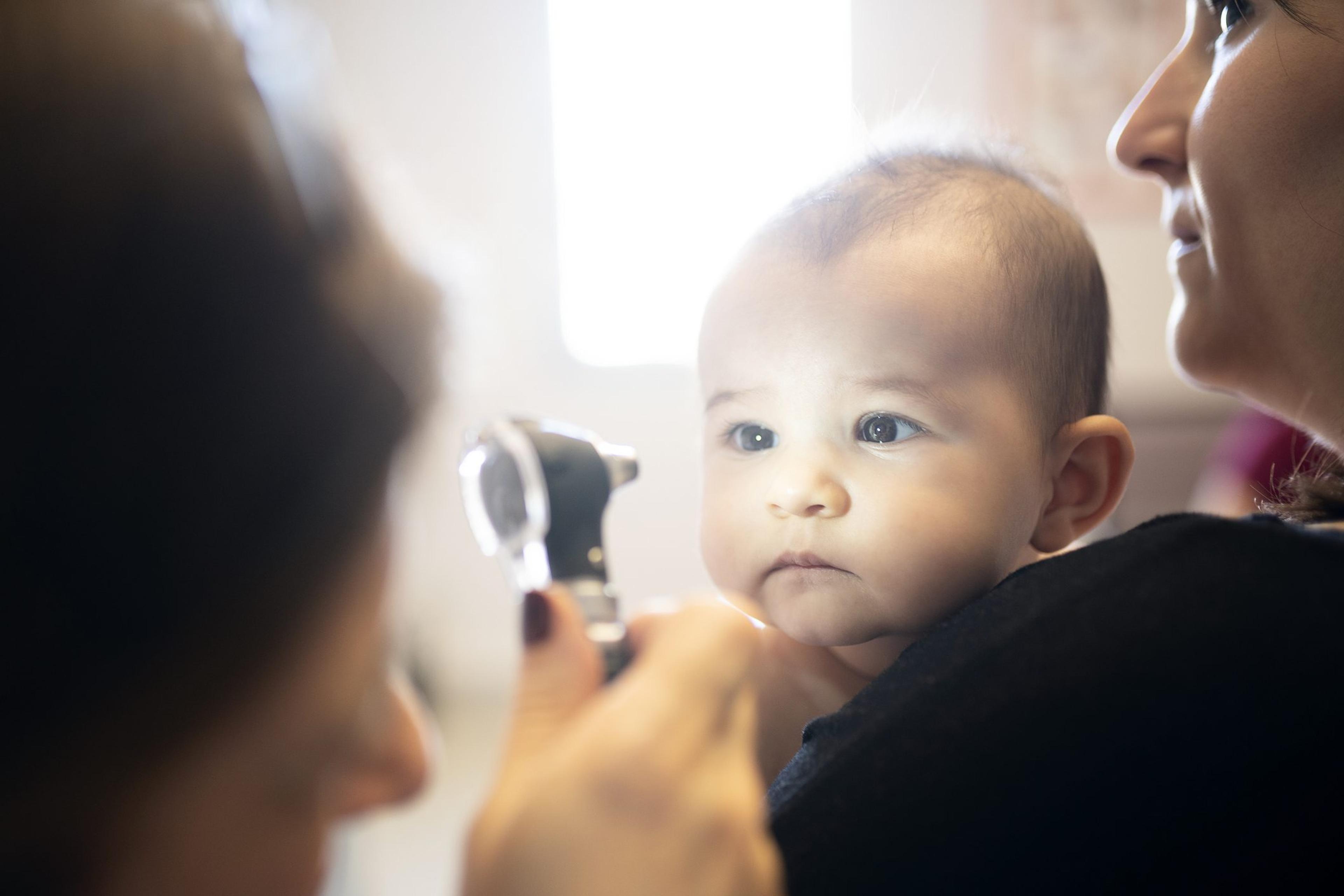Early Signs of Eye Problems in Children
Amy Barczy
| 4 min read
Amy Barczy is a former brand journalist who authored content at Blue Cross Blue Shield of Michigan. Prior to her time at Blue Cross from 2019-2024, she was a statewide news reporter for MLive.com. She has a decade of storytelling experience in local news media markets including Lansing, Grand Rapids, Holland, Ann Arbor and Port Huron.

Children’s vision can change as they grow and develop – and likely, these changes will occur without much notice from the child or parent and caregiver. Keeping up with regular well-child visits will ensure babies and children are frequently screened for signs of vision problems. There are also some warning signs that parents and caregivers can watch for themselves to bring to the child’s pediatrician or eye doctor. The earlier vision problems are detected in babies and children, the more likely treatments will be successful.
Early concerns
After babies are born, their eyesight undergoes dramatic changes in the first six months. At first, newborn babies can only see large shapes, faces and bright colors. Here are some growth and development milestones to be aware of: Babies ages 0-1 year: It’s common for newborn babies to cross or misalign their eyes in other ways. This typically ends after age four months. After age three months old, babies should be able to follow an object with their eyes as it moves in front of them. Talk with the baby’s doctor about your observations and concerns. Preschool-age children: At this age, if the child’s eyes are misaligned, it’s important to talk to your child’s doctor right away. Some vision problems may have no warning signs. Children in this age group need to have their vision checked during annual checkups with the pediatrician.
Warning signs of vision problems
These are 10 symptoms of eye problems children may experience that parents and caregivers should pay attention to, according to the American Academy of Ophthalmology:
- Blinking or rubbing
- Spots on the white part of the eye
- Dilated eyes/large pupils
- Seeing spots in vision
- Discomfort or itchiness
- Sleeping with eyes open
- Crust or goop in eyes
- Misaligned eyes – crossed eyes, eyes that turn out or don’t focus together
- Tilting the head or covering an eye
Additionally, the American Academy of Pediatrics advises if a child has drooping eyelids, eyes that appear sensitive to light and/or eyes that are always watery, it is time to talk to a doctor.
Vision screening schedule in children
Vision screenings often occur first at the pediatrician’s office. If issues are detected, you may be referred to an eye doctor – an ophthalmologist or optometrist – for a comprehensive eye and vision exam. Here’s a typical schedule of vision screenings by age for young children, in accordance with recommendations from the American Academy of Ophthalmology and the American Academy of Pediatrics:
- Newborns: Pediatricians screen newborns for eye issues including birth abnormalities, infections, cataracts and glaucoma.
- 0-6 months: Infants will be screened for vision issues at their well-child visits with the pediatrician, who will check the baby’s reflexes to light and the size and shape of the eye and pupil.
- 6 months and up: Pediatricians will continue to check reflexes and eye development, and will check to see if the child’s eyes track an object or face. They will also check for misalignment.
- 1-2 years: Pediatricians may begin to use instruments to check a child’s vision.
- 3 years and up: By ages 4 to 5 years of age it’s recommended that children undergo visual acuity screening, which includes asking how well they can see letters or symbols from a distance. The American Optometric Association recommends children between the ages of 3 and 5 years should have a thorough eye exam with an optometrist.
- Ages 6-18: School-age children should receive an eye exam with an eye doctor every year, or more frequently if there are issues.
Well-child visits with vision screening are often benefits covered by your health plan, as they are preventive care services. Members can learn more about these preventive care recommendations from Blue Cross Blue Shield of Michigan and Blue Care Network by clicking here. More from MIBluesPerspectives:
- Back-to-School Already? Here’s a Health Checklist for the 2022-2023 School Year
- When to Switch from a Pediatrician to a Doctor
- Why Do Kids Need So Many Shots Today? The Evolution of Vaccine Schedules
Photo credit: Getty Images





